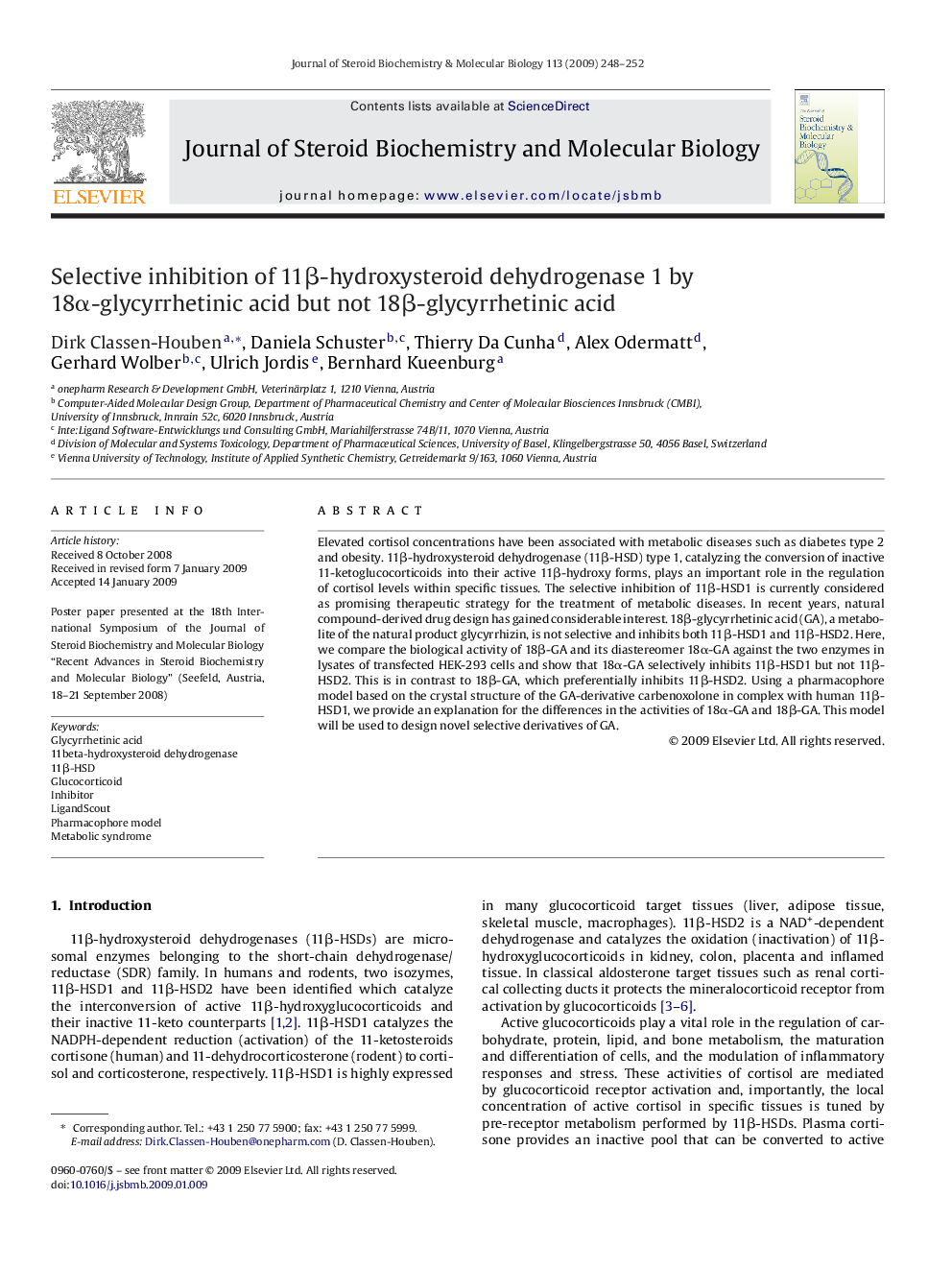| Article ID | Journal | Published Year | Pages | File Type |
|---|---|---|---|---|
| 1991915 | The Journal of Steroid Biochemistry and Molecular Biology | 2009 | 5 Pages |
Elevated cortisol concentrations have been associated with metabolic diseases such as diabetes type 2 and obesity. 11β-hydroxysteroid dehydrogenase (11β-HSD) type 1, catalyzing the conversion of inactive 11-ketoglucocorticoids into their active 11β-hydroxy forms, plays an important role in the regulation of cortisol levels within specific tissues. The selective inhibition of 11β-HSD1 is currently considered as promising therapeutic strategy for the treatment of metabolic diseases. In recent years, natural compound-derived drug design has gained considerable interest. 18β-glycyrrhetinic acid (GA), a metabolite of the natural product glycyrrhizin, is not selective and inhibits both 11β-HSD1 and 11β-HSD2. Here, we compare the biological activity of 18β-GA and its diastereomer 18α-GA against the two enzymes in lysates of transfected HEK-293 cells and show that 18α-GA selectively inhibits 11β-HSD1 but not 11β-HSD2. This is in contrast to 18β-GA, which preferentially inhibits 11β-HSD2. Using a pharmacophore model based on the crystal structure of the GA-derivative carbenoxolone in complex with human 11β-HSD1, we provide an explanation for the differences in the activities of 18α-GA and 18β-GA. This model will be used to design novel selective derivatives of GA.
